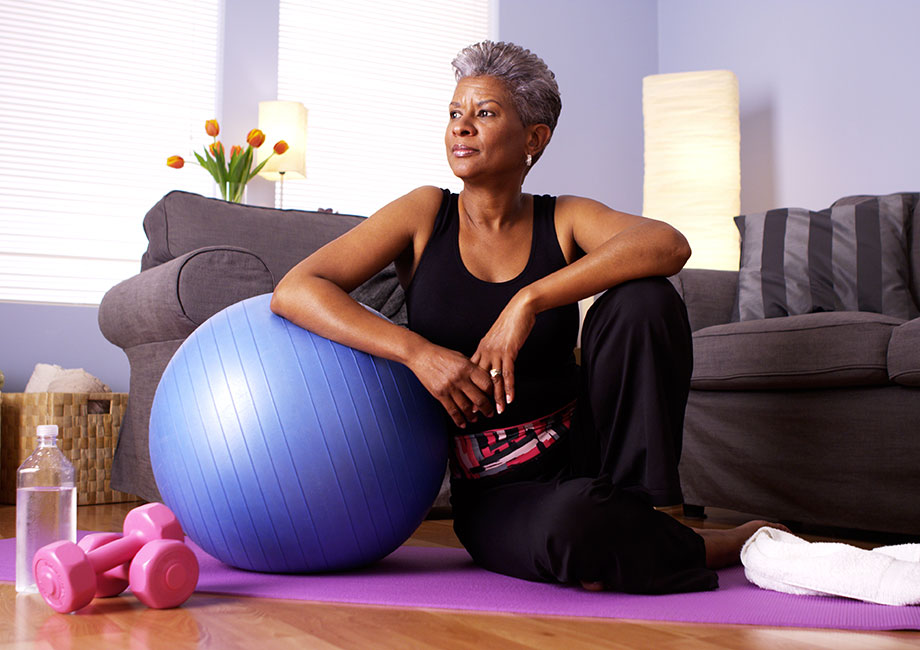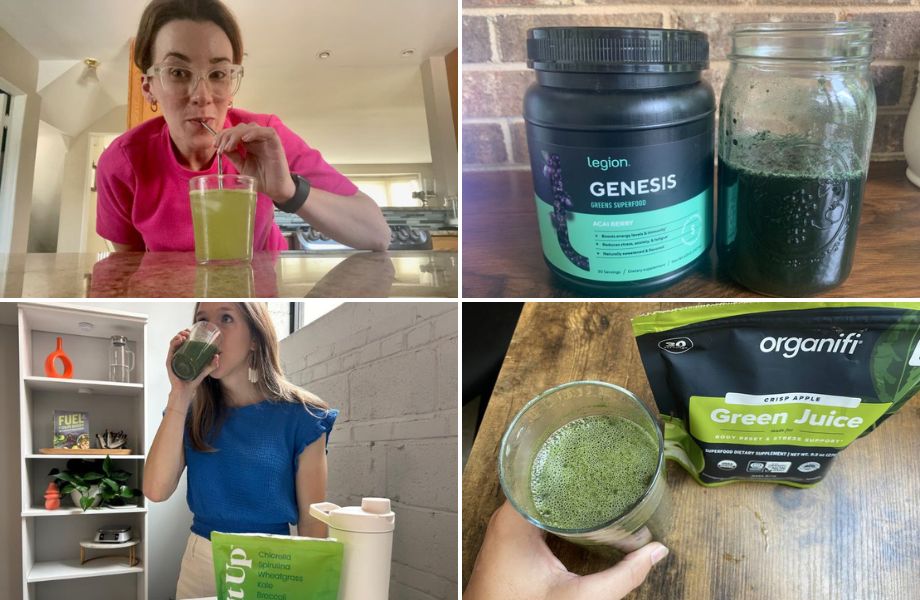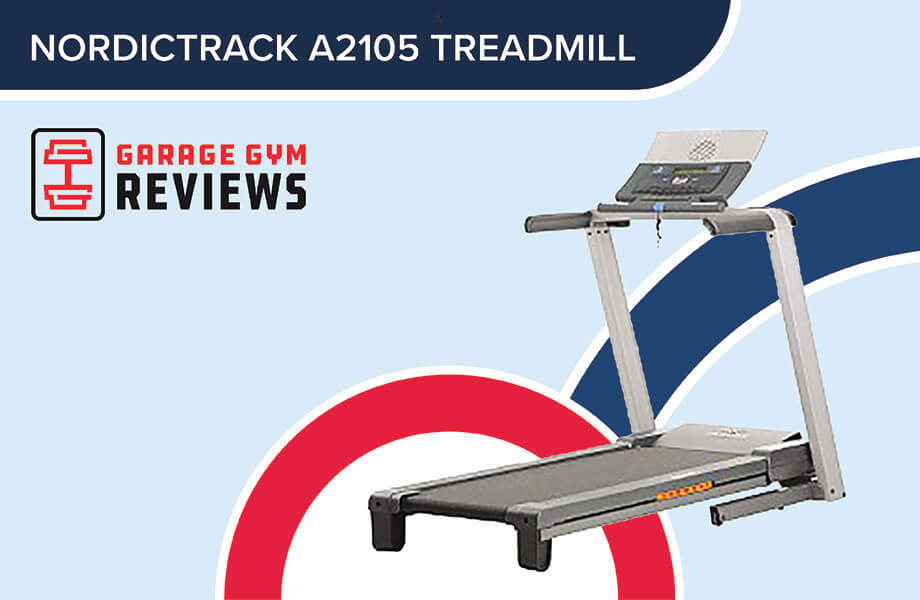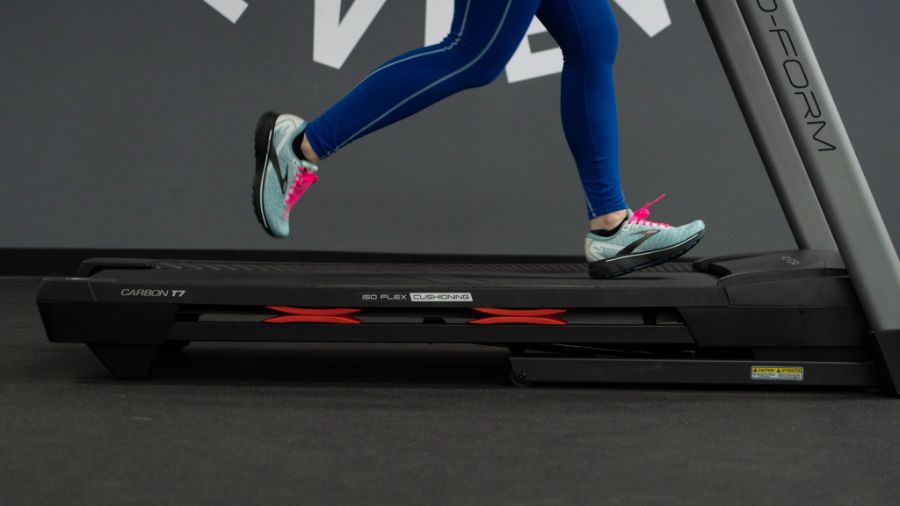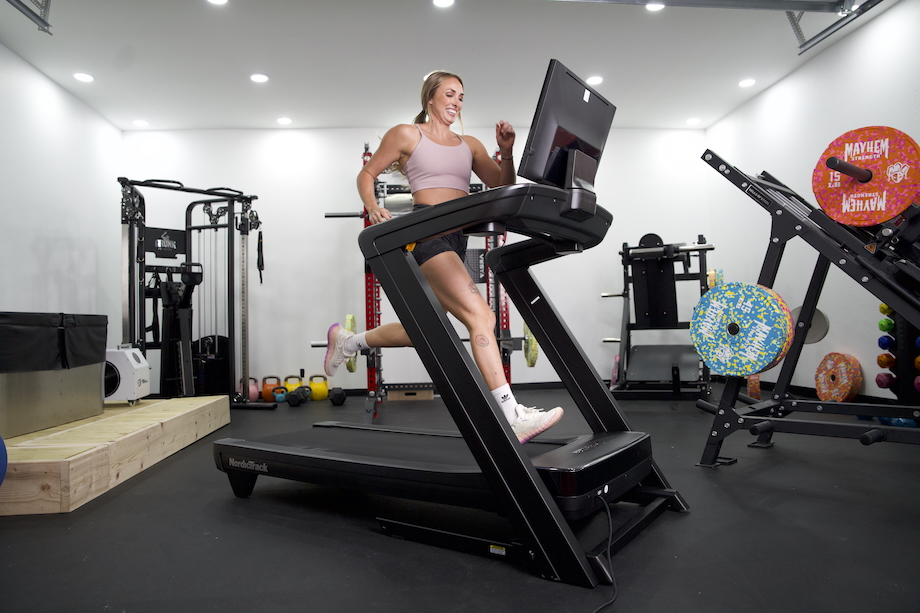Aging is a gift, but it can be tough on your body. Studies show1 that you may lose up to 50% of your muscle mass by the time you’re 80 years old, making it significantly harder to go where you want to go and do what you want to do in your golden years.
The good news is, it’s never too late to take action. Regular exercise2 has been shown to help reduce your risk of disease, build and sustain muscle mass, and increase your overall quality of life.
RELATED: In-Chair Exercises For Seniors
Kate Meier, NASM-CPT, USAW-L1, CF-L1, and GGR editorial team member, shares eight of the best exercises for seniors over 75 at home. No fancy equipment is required, and you won’t need to sign up for a gym membership (unless you want to). Here’s a no-nonsense approach to your health so you can stave off the adverse effects of aging and live your best life!
Medical disclaimer: This article is intended for educational and informational purposes only. It is not intended as a substitute for medical advice. For health advice, contact a licensed healthcare provider.
Best At-Home Exercises For Seniors Over 75
- Pelvic tilt
- Wall push-up
- Seated heel slide
- Seated ankle raise
- Seated arm circles
- Seated leg lift
- Seated neck stretch
- Squat to chair
Pelvic Tilt
Muscles worked: Core, lower back, glutes
Benefits: The pelvic tilt exercise targets and strengthens your deep intrinsic core muscles like the multifidus and the transverse abdominis, but that’s not all. This beginner-friendly movement may alleviate lower back pain, reduce or correct issues associated with poor posture, and—according to the Journal of Exercise Rehabilitation3—help with urinary incontinence.
How to do it:
- Lie on your back with your knees bent and feet planted on the floor.
- Take a deep breath, then exhale, brace your core, and tilt your tailbone upward.
- Inhale again, letting your spine and pelvis return to the starting position.
- Repeat for reps or time.
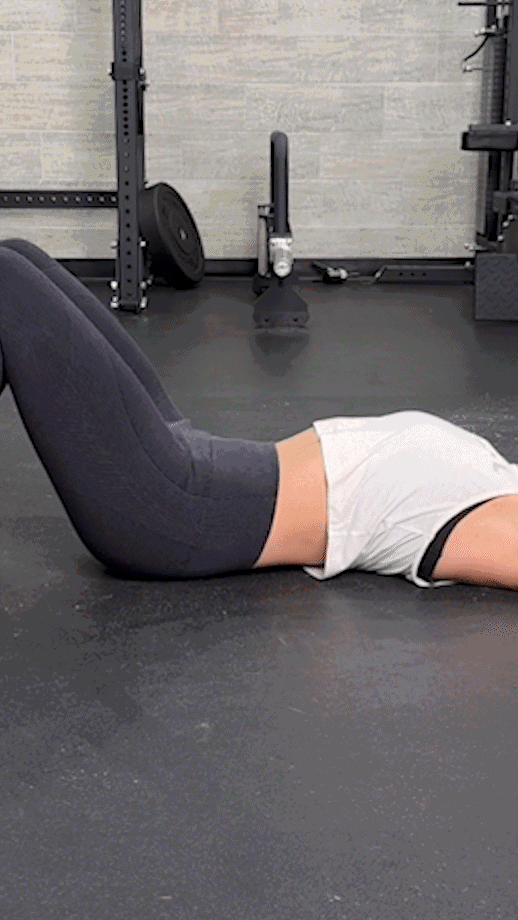
Wall Push-Up
Muscles worked: Chest, shoulders, upper back, core
Benefits: “Push-ups are one of the best bodyweight exercises, especially if you’re looking to improve strength in your upper body, but they can be very challenging for older people,” says Kate Meier, NASM-CPT, USAW-L1, CF-L1. “That’s what makes the wall push-up such a great modification. It reduces the amount of weight you need to move while also reducing the amount of pressure on your wrist joints.”
How to do it:
- Stand with your feet hip-width apart and a wall about an arm’s length away.
- Place both hands on the wall with your fingers pointed toward the ceiling.
- Bend your elbows and lower your upper body toward the wall.
- Continue until your nose almost touches the wall.
- Push yourself back to the starting position.
- Repeat for reps.
RELATED: What Muscles Do Push-Ups Work?
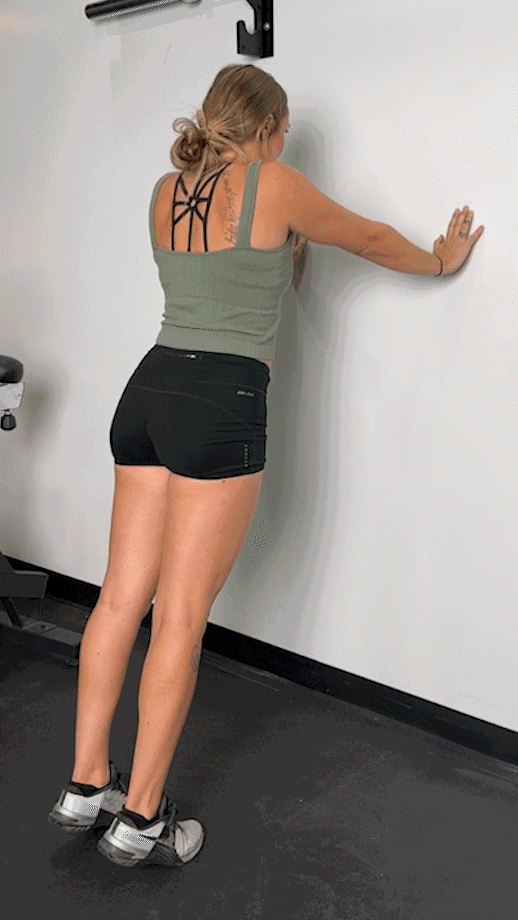
Seated Heel Slide
Muscles worked: Quadriceps, hamstrings, hip flexors, calves
Benefits: This simple exercise targets tons of lower-body muscles to build strength and muscle mass in the legs. According to the European Society of Sports Traumatology, Knee Surgery and Arthroscopy4, the seated heel slide also contributes to proper knee function, which may benefit seniors and other individuals with reduced knee strength and mobility.
How to do it:
- Sit upright in a chair and place your palms down at the edge of the seat.
- Slide your left heel forward keeping your left toes pointed.
- Continue until your left knee is nearly fully extended.
- Slide your left heel back, then repeat the movement on your other side.
- Alternate sides for each rep until the set is complete.
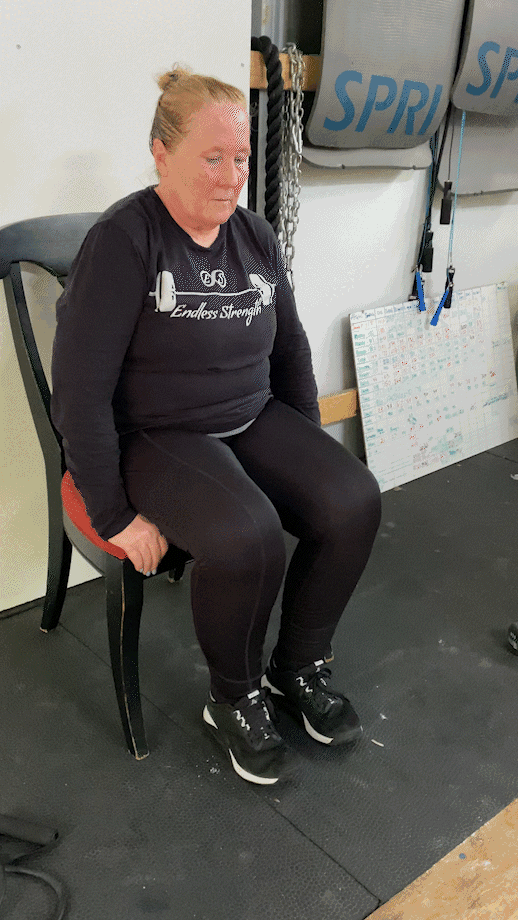
Seated Ankle Raise
Muscles worked: Calves
Benefits: The seated ankle raise uses dorsiflexion to stretch and strengthen the underutilized but ever-important calf muscles, namely the gastrocnemius and soleus muscles. According to the International Journal of Sports Physical Therapy5, ankle dorsiflexion “can influence dynamic balance,” meaning older adults who improve their dorsiflexion range of motion may have better balance and, therefore, a reduced risk of falls.
How to do it:
- Sit upright in a chair with your palms on your seat and your knees bent.
- Slowly point your toes toward the ceiling keeping your heels on the floor.
- Continue until you feel a gentle stretch in your calf muscles.
- Return to the starting position.
- Repeat for reps.
RELATED: Best Calf Exercises
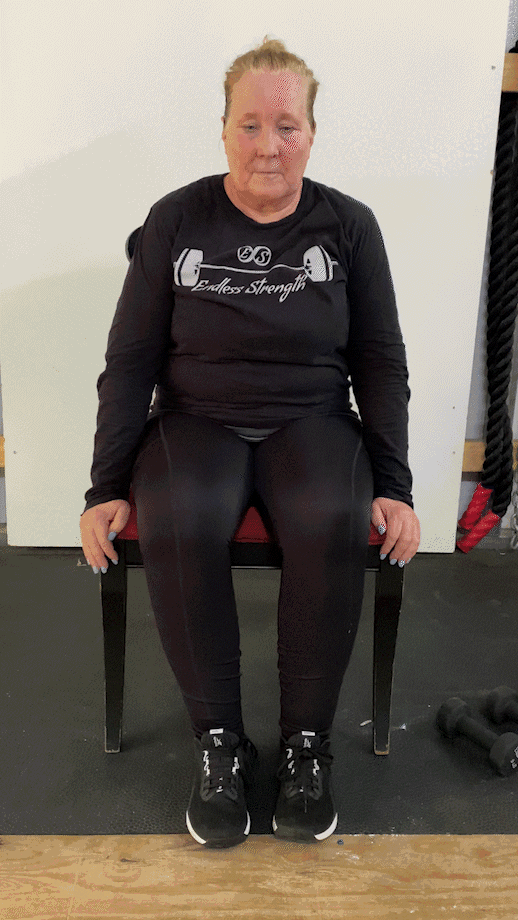
Seated Arm Circles
Muscles worked: Arms, shoulders, upper back
Benefits: “Seated arm circles add a little cardio to your chair workout because they increase your heart rate and improve circulation while stimulating various upper-body muscles, namely the biceps, triceps, and deltoids,” says Kate. “They’re also good for enhancing mobility in your shoulders and neck.”
How to do it:
- Sit upright in a chair with your arms outstretched to your sides.
- Start moving both arms forward simultaneously in a circular motion.
- Complete the desired number of circles, then stop and start circling backward.
- Perform the same number of reps backward as you did forward, then rest.
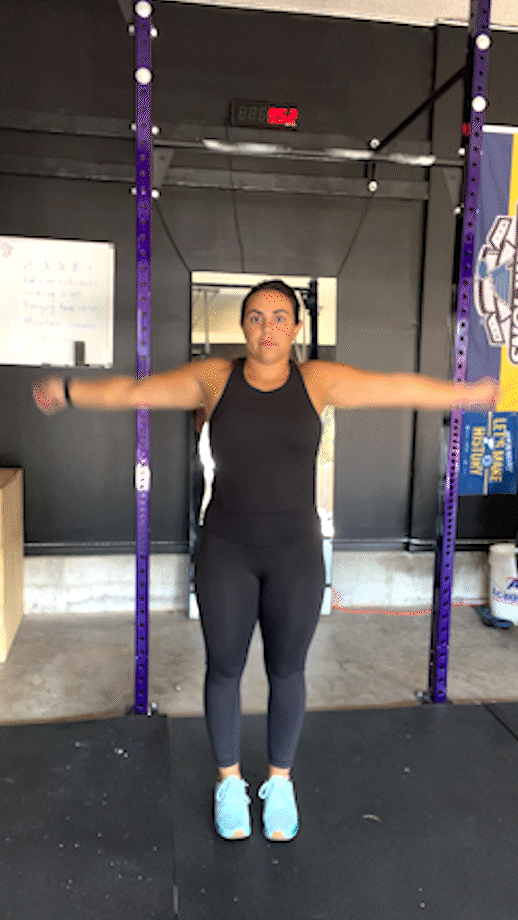
Seated Leg Lift
Muscles worked: Quadriceps, hip flexors, core
Benefits: Strengthening your lower body goes a long way toward fall prevention. The seated leg lift targets your quads and hip flexors for improved muscle strength and mass while hitting the core as well for greater stability.
How to do it:
- Sit upright in a chair with your palms on your seat and your knees bent.
- Extend your left leg and raise it straight up toward the ceiling.
- Continue until your leg is nearly parallel with the floor.
- Slowly return to the starting position.
- Repeat the movement, this time using your right leg.
- Alternate sides for each rep until the set is complete.
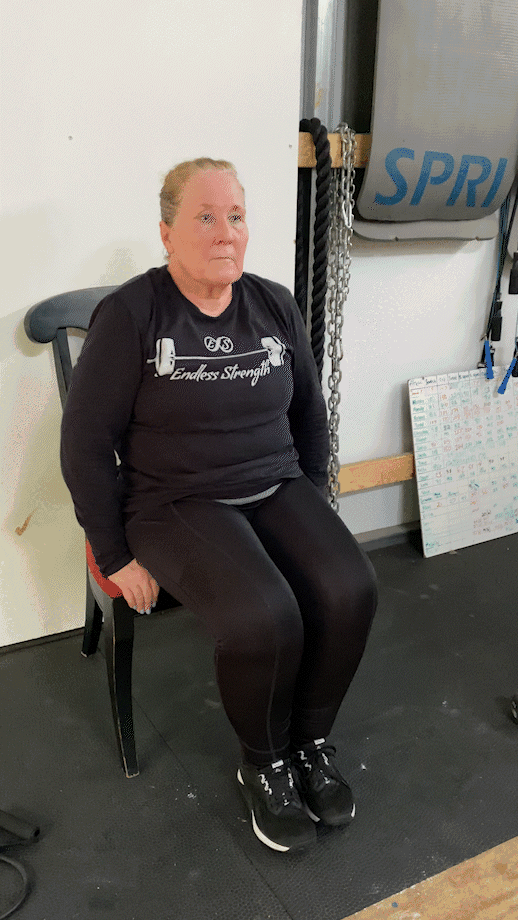
Seated Neck Stretch
Muscles worked: Neck, upper back
Benefits: Older adults commonly experience aches, pains, and stiffness associated with natural wear and tear on the body, but they’re also more susceptible to health conditions like arthritis, osteoarthritis, spinal stenosis, and more. Stretching the neck may help stave off symptoms associated with these conditions, alleviating neck pain and stiffness, improving neck function and mobility, and contributing to better all-around health and wellness.
How to do it:
- Sit upright in a chair with your hands on your seat and your palms facing down.
- Slowly tilt your head to one side until you feel a gentle stretch.
- Hold for the desired duration, then slowly roll your head to the other side.
- Repeat for the desired number of repetitions.
RELATED: Best Neck Exercises
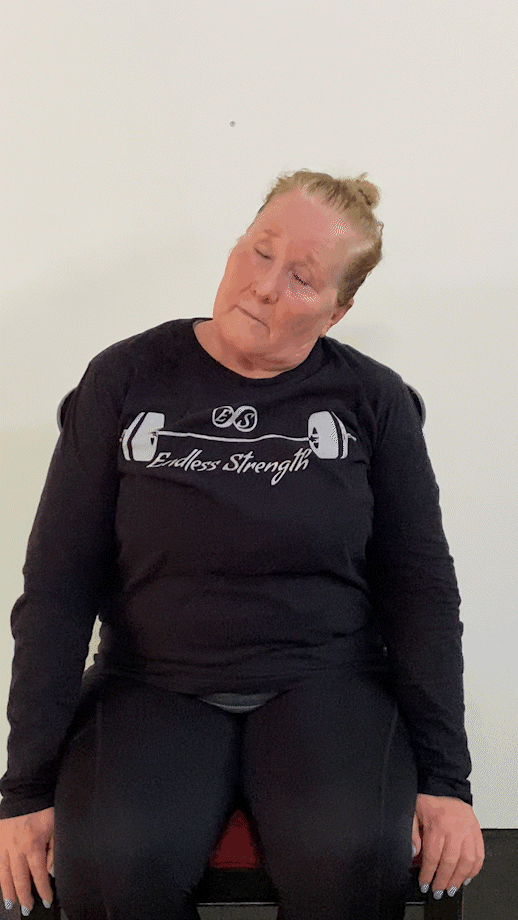
Squat to Chair
Muscles worked: Quadriceps, hamstrings, glutes, core
Benefits: Squatting into a chair takes the tried-and-true squat and modifies it to make it more manageable and functional for older people. It targets the same muscles as the real deal but alleviates some of the balance and stability challenges that older individuals may struggle with, allowing for a less intense method of strengthening the lower body and core.
How to do it:
- Stand with your feet shoulder-width apart and a chair directly behind you.
- Push your hips back and bend your knees, lowering yourself onto your chair.
- Place your hands on your seat, tighten your core, drive through your heels, and push yourself back into a standing position.
- Repeat for reps.
RELATED: What Muscles Do Squats Work?
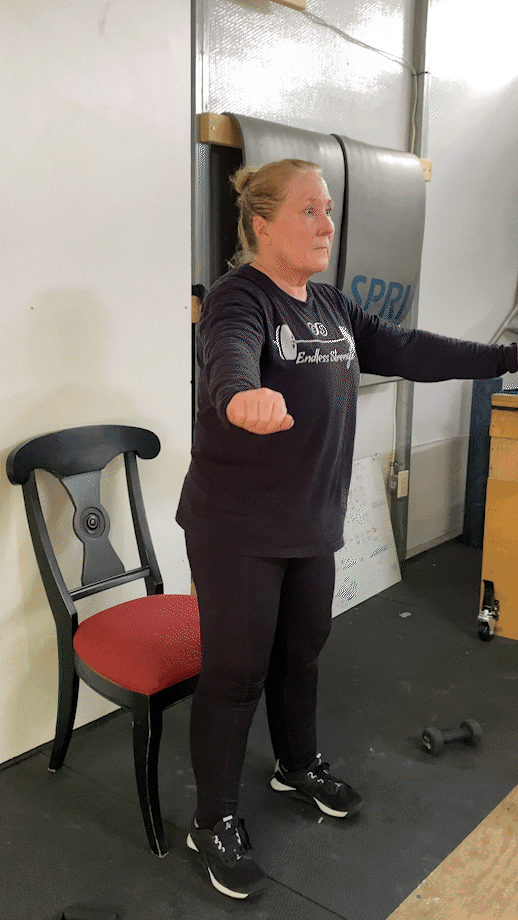
Sample Senior Workout
What you’re able to do will depend entirely on your current fitness level and general health. That said, you can perform many of these exercises from a seated position, making them more accessible for beginners and seniors with mobility restrictions.
If you’re trying to get back into the swing of things, you can give this sample workout a try and see how you do, granted you have medical approval. You can also consult an online personal trainer to get form advice and corrections.
| Exercise | Sets | Reps / Duration |
| Wall Push-Up | 1-3 | 2-6 |
| Squat to Chair | 1-3 | 2-6 |
| Seated Arm Circles | 1-3 | 8-12 |
| Seated Neck Stretch | 1-3 | 15-30 sec, each side |
| Seated Heel Slide | 1-3 | 6-12 |
| Seated Ankle Raise | 1-3 | 6-12 |
| Seated Leg Lift | 1-3 | 6-12 |
| Pelvic Tilt | 1-3 | 6-12 |
Equipment needed: Chair, resistance bands
RELATED: Resistance Bands For Seniors
Types Of Exercise For Seniors Over 75
Seniors over 75 may feel daunted by the prospect of adopting a new exercise regimen, but the health benefits are too important to ignore.
Luckily, there are many ways to stay active, so you can find one that works for you and start reaping the rewards of a healthy lifestyle today!
Low-Impact Exercise
Treadmill running ranks as one of the most popular cardio workouts in the world, but the high-impact nature of the exercise wreaks havoc on your joints, making it ill-suited for older adults.
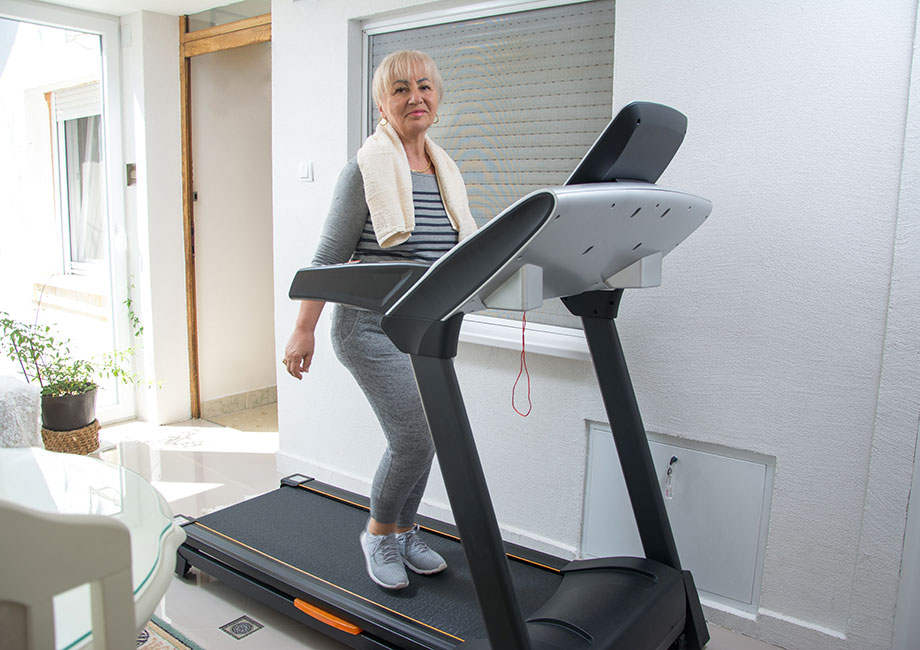
Low-impact exercise, such as walking, using an elliptical machine, cycling, rowing, and lifting weights, offers similar cardiovascular benefits while placing less stress on the joints, meaning they’re ideal for seniors and individuals with joint pain or injuries.
RELATED: Best Treadmill For Seniors
Balance Exercises
As we grow older, many of us lose muscle mass, bone density, and general cognition, all of which are important for keeping our balance. Falling over may be embarrassing for younger adults, but for older adults, a fall can be devastating or even fatal.
That’s where balance exercises come in. According to Sports Medicine6, balance training is effective for helping older adults improve static and dynamic balance, increase muscle mass and strength, enhance proprioception, and reduce fall risk.
Simple exercises such as standing on one foot or performing a heel-to-toe walk are sufficient for posing an adequate challenge without going overboard.
Chair Exercises
You may doubt that you can get a good workout simply sitting in a chair. However, the International Journal of Environmental Research and Public Health7 found that “chair-based exercises [were] effective and should be promoted as simple and easily implemented activities to maintain and develop strength for older adults.”
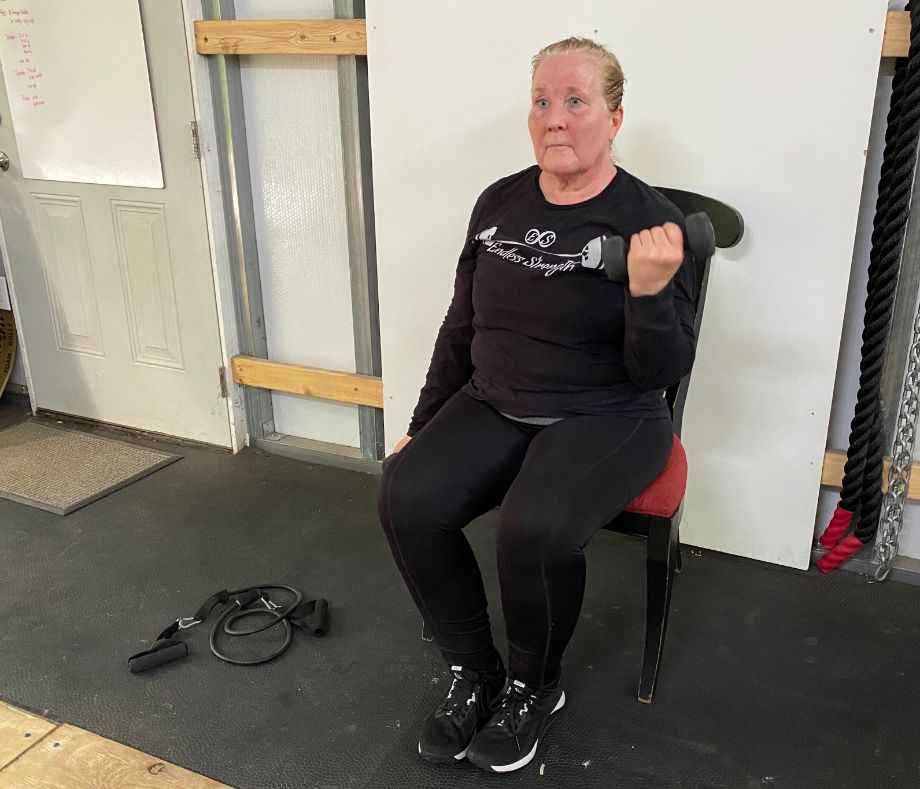
There are all sorts of chair exercises at your disposal, ranging from static stretches and lightweight dumbbell exercises to even more involved programs like chair yoga.
RELATED: Best Dumbbells
Strength Training
Older adults who started at a higher fitness level may still be capable of impressive feats of strength, but we aren’t expecting beginners at any age to pick up their first barbell and blast out heavy sets of the bench press.
However, strength training using free weights, resistance bands, and selectorized machines are all viable ways to increase muscle strength, size, and function without beating up your joints.
RELATED: Strength Training for Women Over 50
Water Aerobics
Water aerobics are gentle on the body while simultaneously providing a highly effective workout.
According to the Scandinavian Journal of Medicine & Science in Sports8, water-based exercise programs may help older adults improve strength, balance, and cardiorespiratory fitness while improving symptoms of various health conditions and diseases, including bone disease, heart disease, fibromyalgia, Parkinson’s, and more.
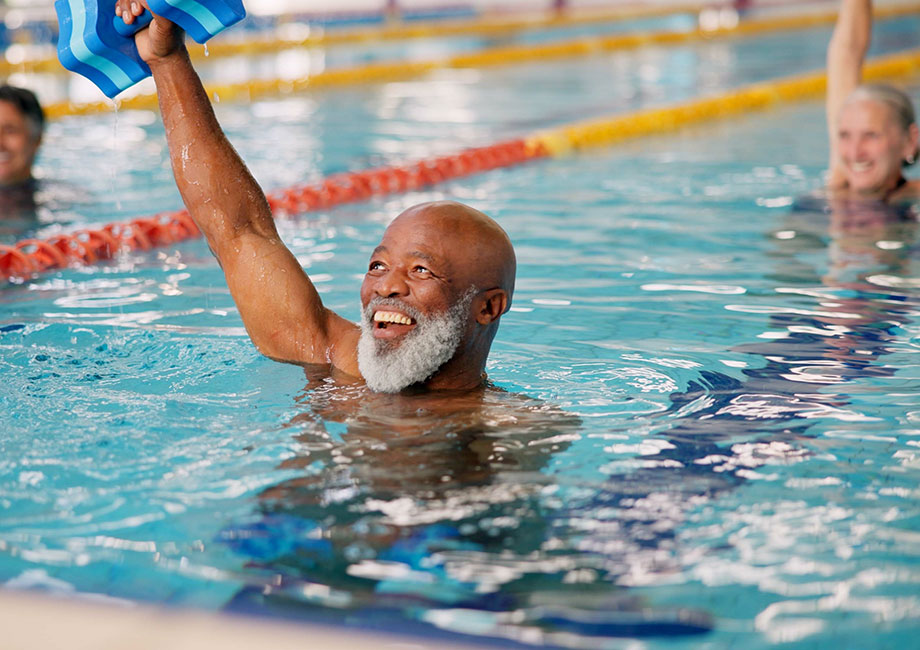
RELATED: Benefits of Water Aerobics
Tai Chi
Tai chi is an ancient Chinese martial art that involves moving slowly through various forms and positions while controlling breathing. While it was originally developed for combat, it’s more widely used today for exercise and rehabilitative purposes.
Seniors may enjoy tai chi because it is gentle on the body yet effective at improving strength, endurance, balance, and flexibility, according to BMJ Open Sport & Exercise Medicine9.
Pilates
Developed in the 1920s as an alternative method of building muscle strength, endurance, flexibility, posture, and balance, Pilates involves low-impact, mostly bodyweight exercises that are often well-suited for older adults.
Machine Pilates involves the signature Pilates Reformer machine, but mat Pilates only needs one of the best exercise mats, making it a great at-home exercise routine.
Benefits of Exercise for Seniors Over 75
The benefits of regular exercise are well documented, but what should seniors over the age of 75 hope to gain from incorporating a healthy amount of physical activity into their daily routines?
- Increased muscle strength, mass, and function10
- Decreased risk of cardiovascular disease11
- Improved sleep quality12
- Greater balance and reduced risk of falling13
- Improved bone density14
- Improved mental health15
- Improved cognitive function16
Adopting a new workout routine may seem intimidating if you’re unaccustomed to regular exercise. But, with the many benefits listed above, it’s well worth your while to work physical activity into your daily routine as soon as possible.
Exercise For Seniors Over 75 At Home: Final Thoughts
Getting older may make the activities of everyday life harder than they used to be, but regular exercise can help stave off the adverse effects of aging and allow you to enjoy your best life regardless of age.
Our at-home exercises provide a great foundation to help you get reacquainted with exercise and guide you toward better health and well-being.
So, what are you waiting for? Give our exercises a try today!
Exercise For Seniors Over 75 At Home: FAQs
How can I get back in shape at 75?
The World Health Organization17 (WHO) recommends a minimum of 150 minutes of moderate exercise per week or 75 minutes of vigorous activity.
“Beginners should err on the side of caution and opt to do less in the beginning,” says Kate Meier, NASM-CPT, USAW-L1, CF-L1, and GGR editorial team member, “whereas those who have consistently worked out for years already may do a little more than the bare minimum.”
When in doubt, consult a personal trainer, coach, or other qualified healthcare professional for a personalized plan.
How much walking should a 75 year old do?
To meet the minimum recommended 150 minutes of moderate exercise, you’d have to go for five 30-minute walks each week17. Stay hydrated, take breaks as needed, keep a comfortable pace, and, above all else, listen to your body.
What is the number one exercise to increase balance in seniors?
What works for one may not work for all, so it’s hard to say if there is one balance exercise that is objectively better than the rest. That said, yoga, Pilates, and tai chi all make generous use of balance exercises in their respective programs.
Lower-body strength and ankle dorsiflexion are also tied to better balance, so incorporating exercises like the squat to chair, seated heel slide, and seated ankle raise, should help older adults improve their balance and reduce their risk of falls.
References
- Wilkinson DJ, Piasecki M, Atherton PJ. The age-related loss of skeletal muscle mass and function: Measurement and physiology of muscle fibre atrophy and muscle fibre loss in humans. Ageing Res Rev. 2018;47:123-132. doi:10.1016/j.arr.2018.07.005
- Mora JC, Valencia WM. Exercise and Older Adults. Clin Geriatr Med. 2018;34(1):145-162. doi:10.1016/j.cger.2017.08.007
- Cho ST, Kim KH. Pelvic floor muscle exercise and training for coping with urinary incontinence. J Exerc Rehabil. 2021;17(6):379-387. Published 2021 Dec 27. doi:10.12965/jer.2142666.333
- Eymir M, Erduran M, Ünver B. Active heel-slide exercise therapy facilitates the functional and proprioceptive enhancement following total knee arthroplasty compared to continuous passive motion. Knee Surg Sports Traumatol Arthrosc. 2021;29(10):3352-3360. doi:10.1007/s00167-020-06181-4
- Basnett CR, Hanish MJ, Wheeler TJ, et al. Ankle dorsiflexion range of motion influences dynamic balance in individuals with chronic ankle instability. Int J Sports Phys Ther. 2013;8(2):121-128.
- Lesinski M, Hortobágyi T, Muehlbauer T, Gollhofer A, Granacher U. Effects of Balance Training on Balance Performance in Healthy Older Adults: A Systematic Review and Meta-analysis [published correction appears in Sports Med. 2016 Mar;46(3):457. doi: 10.1007/s40279-016-0500-6]. Sports Med. 2015;45(12):1721-1738. doi:10.1007/s40279-015-0375-y
- Klempel N, Blackburn NE, McMullan IL, et al. The Effect of Chair-Based Exercise on Physical Function in Older Adults: A Systematic Review and Meta-Analysis. Int J Environ Res Public Health. 2021;18(4):1902. Published 2021 Feb 16. doi:10.3390/ijerph18041902
- Faíl LB, Marinho DA, Marques EA, et al. Benefits of aquatic exercise in adults with and without chronic disease-A systematic review with meta-analysis. Scand J Med Sci Sports. 2022;32(3):465-486. doi:10.1111/sms.14112
- Wehner C, Blank C, Arvandi M, Wehner C, Schobersberger W. Effect of Tai Chi on muscle strength, physical endurance, postural balance and flexibility: a systematic review and meta-analysis. BMJ Open Sport Exerc Med. 2021;7(1):e000817. Published 2021 Feb 5. doi:10.1136/bmjsem-2020-000817
- Marzuca-Nassr GN, Alegría-Molina A, SanMartín-Calísto Y, et al. Muscle Mass and Strength Gains Following Resistance Exercise Training in Older Adults 65-75 Years and Older Adults Above 85 Years. Int J Sport Nutr Exerc Metab. 2023;34(1):11-19. Published 2023 Oct 24. doi:10.1123/ijsnem.2023-0087
- Ciumărnean L, Milaciu MV, Negrean V, et al. Cardiovascular Risk Factors and Physical Activity for the Prevention of Cardiovascular Diseases in the Elderly. Int J Environ Res Public Health. 2021;19(1):207. Published 2021 Dec 25. doi:10.3390/ijerph19010207
- Solis-Navarro L, Masot O, Torres-Castro R, et al. Effects on Sleep Quality of Physical Exercise Programs in Older Adults: A Systematic Review and Meta-Analysis. Clocks Sleep. 2023;5(2):152-166. Published 2023 Mar 23. doi:10.3390/clockssleep5020014
- Kim Y, Vakula MN, Bolton DAE, et al. Which Exercise Interventions Can Most Effectively Improve Reactive Balance in Older Adults? A Systematic Review and Network Meta-Analysis. Front Aging Neurosci. 2022;13:764826. Published 2022 Jan 18. doi:10.3389/fnagi.2021.764826
- Hejazi K, Askari R, Hofmeister M. Effects of physical exercise on bone mineral density in older postmenopausal women: a systematic review and meta-analysis of randomized controlled trials. Arch Osteoporos. 2022;17(1):102. Published 2022 Jul 27. doi:10.1007/s11657-022-01140-7
- Yao L, Fang H, Leng W, Li J, Chang J. Effect of Aerobic Exercise on Mental Health in Older Adults: A Meta-Analysis of Randomized Controlled Trials. Front Psychiatry. 2021;12:748257. Published 2021 Oct 6. doi:10.3389/fpsyt.2021.748257
- Xu L, Gu H, Cai X, et al. The Effects of Exercise for Cognitive Function in Older Adults: A Systematic Review and Meta-Analysis of Randomized Controlled Trials. Int J Environ Res Public Health. 2023;20(2):1088. Published 2023 Jan 7. doi:10.3390/ijerph20021088
- Nikitas C, Kikidis D, Bibas A, Pavlou M, Zachou Z, Bamiou DE. Recommendations for physical activity in the elderly population: A scoping review of guidelines. J Frailty Sarcopenia Falls. 2022;7(1):18-28. Published 2022 Mar 1. doi:10.22540/JFSF-07-018




